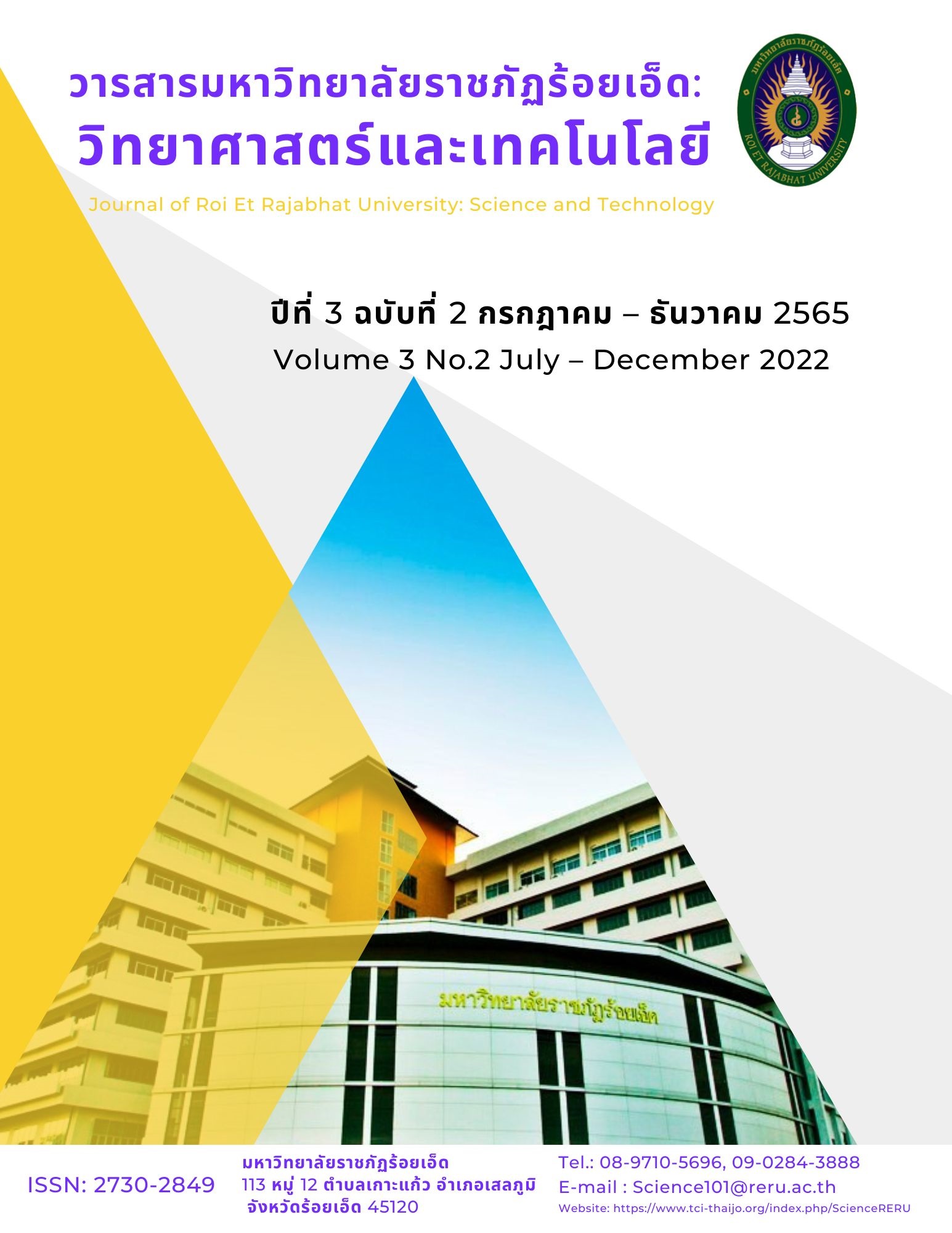Efficiency testing of peanut shelling machine
Abstract
The purpose of this research was to design and develop a peanut shelling machine. To reduce the time for shelling peanut, increase production capacity in industrial-scale peanut processing in households and help resolve labor shortages in agriculture. Peanut shelling machine uses an electric motor, 1 phase, 220 volts, 3 horsepower, as the drive power, consisting of shelling wheel core, peanut hopper set, shelling mesh set, there are 3 sizes: 2x10, 1.5x10 and 1x10 cm., the fan cleaning unit and the screening sieve set can be screened in 3 levels, i.e. full kernels, withered kernels and unhusked kernels. Belt transmission to the shelling shaft cleaning fan and screen separator set. Testing the performance of the prototype using Tainan 9 peanut as an example. Conducted a comparative test between shelling by a shelling machine and manual labor. The test was repeated 3 times, each time 5 kg. The shelling results were full peanuts. 70.26 percent withered kernels 12.06 percent and shell 17.68 percent, with 95.25 percent complete kernels. The average shelling time was 2 minutes 17 seconds. The prototype machine had shelling capacity of 131.40 kg/hour. As for the shelling by manual labor, the shelling result was full peanut kernels 71.54 percent, withered kernels 10.95 percent and shell 17.51 percent, the average shelling time was 91 minutes, with a percentage of complete kernels 98.50 percent. Human workers were capable of shelling peanut pods at 3.33 kg/hour. However, the speed of cracking by manual labor depends on the expertise of each manual laborer. Therefore, the use of peanut shelling machine can shorten the time of peanut shelling. Increases productivity in the peanut processing process.
Published
How to Cite
Issue
Section
License
Copyright (c) 2023 Faculty of Liberal Art and Science, Roi-Ed Rajabhat University

This work is licensed under a Creative Commons Attribution-NonCommercial-NoDerivatives 4.0 International License.
บทความที่ได้รับการตีพิมพ์เป็นลิขสิทธิ์ของคณะศิลปศาสตร์และวิทยาศาสตร์ มหาวิทยาลัยราชภัฏร้อยเอ็ด
ข้อความที่ปรากฏในบทความแต่ละเรื่องในวารสารวิชาการเล่มนี้เป็นความคิดเห็นส่วนตัวของผู้เขียนแต่ละท่านไม่เกี่ยวข้องกับมหาวิทยาลัยราชภัฎร้อยเอ็ด และคณาจารย์ท่านอื่นๆในมหาวิทยาลัยฯ แต่อย่างใด ความรับผิดชอบองค์ประกอบทั้งหมดของบทความแต่ละเรื่องเป็นของผู้เขียนแต่ละท่าน หากมีความผิดพลาดใดๆ ผู้เขียนแต่ละท่านจะรับผิดชอบบทความของตนเองแต่ผู้เดียว






